As consumer comfort levels with cashierless technology increase, self-checkout in c-stores is set to broaden in line with other retail segments. Many retailers have “embraced them anew in recent years as they contend with a tight labor market and lost revenue from shoppers moving online, and as shoppers become more accustomed to interacting with technology instead of humans,” a Wall Street Journal article noted in 2020.
Last year, both Kroger and Walmart pushed self-checkout even further and introduced 100% self-checkout test stores. The chains opted to forego traditional manned checkouts altogether: Customers scan their own items, and employees remain on the sidelines and assist as needed.
C-stores have also been getting into the game. Wawa started rolling out self-checkout last year to 60-plus stores and stated that all new stores will include self-checkout as an option. Royal Farms expanded its self-checkout solution to all stores in 2021 after first introducing it at select stores in 2019. And the Spinx Company started piloting self-checkout last summer and plans to introduce the option in all of its 80-plus South Carolina stores this year.
Expect even more c-store activity related to frictionless checkout this year as 41% of convenience retailers report they will offer frictionless/cashierless checkout in 2022, according to data from the recent NACS Building Convenience Retail Success Through Technology survey of retail members. Additionally, 30% say they will offer app-based ordering/payment.
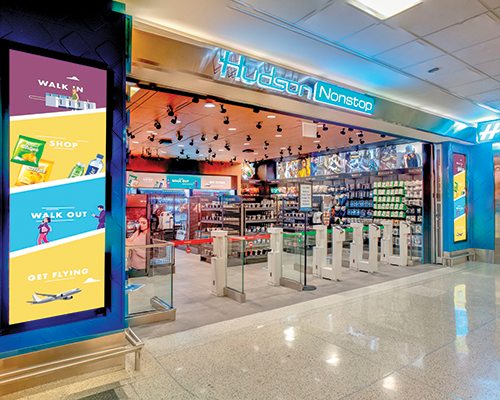
DRAWING INTEREST: AUTONOMOUS CHECKOUT
Yet to be widely adopted in any retail segment, autonomous checkouts continue to draw attention and tests as retailers look to get ahead of the curve. Amazon set the bar for cashierless shopping with its Amazon
Go stores and proprietary Just Walk Out technology, which uses computer vision and sensor technology to track shoppers’ purchases. Amazon now operates 30 such stores since the first one opened to the public in 2018. Since that time several startup companies have launched similar technology, and other retailers have entered the autonomous checkout arena.
Standard AI garnered attention last fall when it helped Circle K retrofit a test store in Tempe, Arizona, with the tech company’s artificial-intelligence platform. Using computer vision, the frictionless checkout system allows customers to “enter the store and shop, tap and go—meaning shop as they normally would, quickly tap their smartphone at a tablet-based checkout station and exit the store without waiting in line or having to scan products,” said Michael Suswal, co-founder of Standard AI.
AI recognizes when customers remove or return items on the shelf, tallies the items and electronically delivers a receipt. The system uses no shelf sensors and instead relies on cameras and the AI component to know what the consumer is taking for purchase.
“It’s not just about getting people in and out faster,” said Suswal. “It’s about the customer having a better experience because they are not spending time in line. It’s a new paradigm in shopping.”
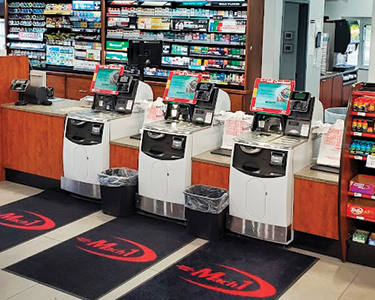
Suswal likens it to the transition from taxis to Ubers. That platform shift created a different experience, he noted. “With a taxi,it meant explaining where I wanted to go to the driver, and in the end passing them money for payment,” he said. “Uber changed all that: They already knew where I was going, and the money was already established.”
While autonomous formats are not yet part of the mainstream shopping culture today—in any retail outlet—it is something that c-stores are becoming more aware of as a potential opportunity. For those already tapping frictionless in the more traditional format of kiosk-based self-checkout stations, autonomous could be the next generation. Alan Meyer, CEO of Meyer Oil Company, is certainly open to learning more. The Illinois-based downstream petroleum company operates NCR self-checkout units at six of the company’s 23 Mach 1 convenience stores to date, with plans to roll it out to another eight locations.
“I’m always curious about different approaches that can benefit our stores,” said Meyer. “I talk to a lot of my peers about frictionless and self-checkout. Everyone is somewhere on the spectrum of implementing or learning more.” That said, he added that kiosk-based self-checkout stations seem to have the edge at the moment in terms of gaining greater acceptance among c-stores (see “Practical Advice” sidebar). “Self-checkout is probably the norm in the c-store industry today,” he said when it comes to frictionless solutions.
Self-checkout allows managers to redeploy staff to other areas, like foodservice and cleaning.
CLOSING IN ON ACCEPTANCE: SELF-CHECKOUT
Another convenience store chain on its way to mastering self-checkout is Parker’s, which is now fully committed to self-checkout. All new stores will include a self-checkout option, said Scott Smith, senior director of IT at Parker’s, who oversees self-checkout operations for the 70-store chain based in Savannah, Georgia. The retailer is also actively retrofitting legacy stores with the NCR self-checkout system, he said.
Parker’s actually prefers the term “assisted checkout” instead of self-checkout, which reflects a soft-sell strategy of guiding hesitant customers through the process. Another key term the Parker’s team uses: “concierge in attendance,” which Smith said reinforces the fact that the store still has someone there interacting with customers to provide a positive experience. “That person—the concierge—can see if someone’s having an issue,” he said, “and help scan items. There is a lot of interaction with the employee and the customer. It also helps transition customers to using assisted checkout through those interactions and makes the process less intimidating.”
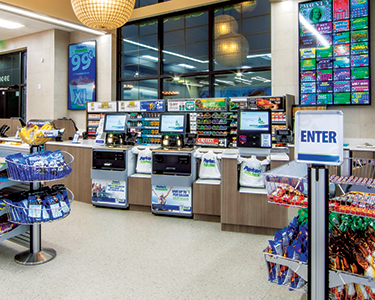
Parker’s started installing self-checkout systems at stores in 2020 and continues to add them where it makes sense space-wise, Smith said. The retrofit for self-checkouts takes a store from three manned cash registers to one manned checkout plus three self-checkouts. The maximum is five self-checkouts, which sit in line with the manned checkout at the front of the store.
The store-level breakdown looks like this: At a busy store, Parker’s has three self-checkout options. One functions as a credit/debit-only machine, and two other self-checkout machines offer the choice of using a card or cash. Additionally, two traditional cashier-manned registers sit on each end of the self-checkout lineup. “One of those manned checkouts always has a cashier present. The other can serve as more of an overflow station and may not always be manned, but at the same time, it creates an extra spot for when the store is busy,” Smith said.
The decision to put in a machine that allows cash payment is based on the past year’s worth of data at that store, Smith explained. If the store has greater utilization of cash, Parker’s installs a cash option, otherwise the chain opts for the card-only approach.
On average, Parker’s stores are 60% credit usage today on the machines. “It really depends on the area, but holistically, we are starting to see stores going more toward credit,” Smith said. “Rural areas tend to be high on cash usage, with customers frequenting downtown locations higher on credit.” The advantage of a credit-only system is fewer moving parts, he noted, and no need for the chain to incorporate cabinet work in the retrofit with credit-only machines.
Based on internal metrics, Smith said, “It’s definitely doing what we thought.” Overall, 68% of transactions now happen via self-checkout at Parker’s stores, he said, with the highest location coming in at 86% and the lowest at 49.8%. “It reduces friction points. It’s a line buster to get people in and out,” he added.
The smaller overall basket size is one reason Smith feels customers more willingly accept self-checkout options in the c-store segment versus, say, grocery stores. “With the basket size in c-stores generally being fewer than four items, it’s easy to scan and leave. And we have barcodes on everything, even bananas, so customers don’t have to weigh or look up anything. We’ve made it easier for customers to tap and pay.”
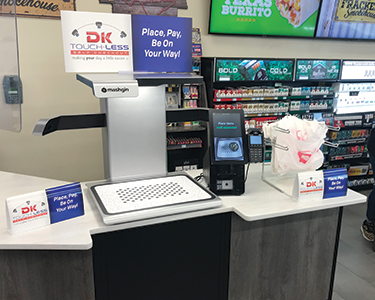 For other chains looking to add self-checkout stations, Smith suggests first working with operations personnel and store leadership to gain acceptance. “When you get operational buy-in and show store teams that this can help them, everyone buys in, and that’s huge,” he said. “We sit down with store leadership and show them metrics from other stores and send them to a self-checkout store to see it in action. Then they understand the holistic advantage and how much faster transactions can occur. They like it when they see how it’s successful at other stores.” The Parker’s team continues to reiterate that stores are still hiring, he said, emphasizing that self-checkout allows managers to redeploy staff to other areas, like foodservice and cleaning.
For other chains looking to add self-checkout stations, Smith suggests first working with operations personnel and store leadership to gain acceptance. “When you get operational buy-in and show store teams that this can help them, everyone buys in, and that’s huge,” he said. “We sit down with store leadership and show them metrics from other stores and send them to a self-checkout store to see it in action. Then they understand the holistic advantage and how much faster transactions can occur. They like it when they see how it’s successful at other stores.” The Parker’s team continues to reiterate that stores are still hiring, he said, emphasizing that self-checkout allows managers to redeploy staff to other areas, like foodservice and cleaning.
Toby Awalt, director of product marketing at Mashgin Inc., agrees that adding frictionless checkout can reduce workloads and allow a chain to shift some staff to do other, possibly more meaningful, tasks. Based on his recent conversations with retailers, he adds that most c-store operators also believe they will be dealing with a labor shortage for a while longer. “Many retailers continue to struggle to fill jobs,” Awalt said, adding that he finds a correlation between understaffed stores and a greater use of frictionless checkout. “And long-term employees like the system because it greatly reduces a task that tends not to be the favorite,” he said.
Overall, 68% of transactions now happen via self-checkout at Parker’s stores.
“Frictionless” is the preferred term for the Mashgin model, which Awalt describes as an enriched self-checkout approach. The system varies from a traditional self-checkout system because customers are not required to scan items. Instead, customers place their items on a tray and the system identifies them using computer vision and artificial intelligence programs. There is a stopping point at a unit, but essentially the technology powering the Mashgin model matches what supports autonomous checkouts.
Once installed, staff at the store level add any SKUs not already in the system by building a visual profile of the object through photos that then funnels into the Mashgin network for any store using that company’s system. “Technologies like this will see significant market share from the top players over the next three years,” Awalt said. “The combination of the pandemic and the labor shortage is acting as a catalyst for the industry as a whole. More c-store companies today have full innovation teams—they are ready for this.”
Downstream energy company Delek US Holdings started rolling out the Mashgin system last summer at its retail operations in Texas. Additionally, Mashgin’s Touchless Self-Checkout was named the top Cool New Product at the 2021 NACS Show.
CATCHING ON: MOBILE PAYMENTS
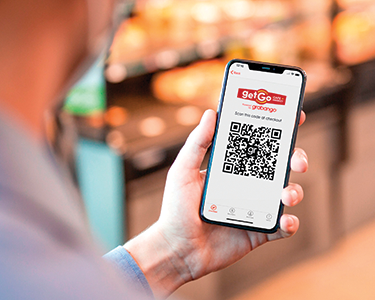 App-based mobile checkouts offer another option for frictionless payment, especially as consumers have grown accustomed to using mobile payment apps such as Venmo. Apple Pay is the market share leader in this space, according to data from Statista. Five out of 10 U.S. respondents said they used Apple Pay in a store or restaurant between August 2020 and August 2021, according to one Statista survey.
App-based mobile checkouts offer another option for frictionless payment, especially as consumers have grown accustomed to using mobile payment apps such as Venmo. Apple Pay is the market share leader in this space, according to data from Statista. Five out of 10 U.S. respondents said they used Apple Pay in a store or restaurant between August 2020 and August 2021, according to one Statista survey.
While consumer adoption of mobile payments has not skyrocketed, many forecasts point to usage figures increasing faster in the years ahead. The global mobile payment market is expected to expand at a compound annual growth rate of 31.8% from 2021 to 2028, according to a report by Grand View Research Inc. “The retail and e-commerce segment is expected to emerge as the fastest-growing segment over the forecast period owing to the increasing partnerships between mobile payment providers and retailers,” the report stated.
BP plans to start checkout-free shopping by summer 2022 using Grabango’s technology platform, which serves as a bit of a combination of an app solution that works with retailers’ loyalty programs and is powered by computer vision technology. Customers do not scan individual items. “The Grabango system knows what’s in the store and where everything is,” said Will Glaser, CEO and founder, Grabango. “Shoppers can pick items up and put them back and are only charged for what they walk out with. Once they are done shopping, they just skip the line, scan their Grabango app once at the kiosk and walk out.”
The company is starting with a retrofit of 10 stores—seven ampm stations in California and three Amoco locations in Pennsylvania. Circle K is already using Grabango’s technology at six stores in Tucson, Arizona. The Grabango system integrates with retailers’ loyalty programs. While currently limited to inside store sales, Glaser said “capabilities for paying at the pump are coming in the future.”
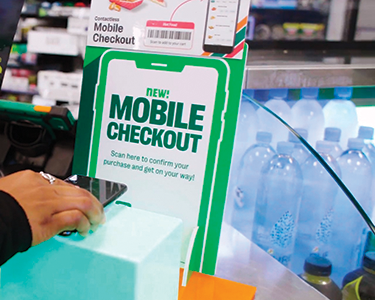 Additionally, 7-Eleven plans to have its Mobile Checkout deployed to all U.S. stores by the end of 2022 after expanding its app-based contactless payment last summer to 3,000 stores. Using the 7-Eleven app, customers in store scan product barcodes themselves and pay via the app. Purchases are confirmed with a QR code before exiting a store.
Additionally, 7-Eleven plans to have its Mobile Checkout deployed to all U.S. stores by the end of 2022 after expanding its app-based contactless payment last summer to 3,000 stores. Using the 7-Eleven app, customers in store scan product barcodes themselves and pay via the app. Purchases are confirmed with a QR code before exiting a store.
“Today, self-checkout has the clear lead in deployed stores,” Glaser admitted, “but checkout-free is growing much faster on a percentage basis.”
With myriad technology solutions now available, convenience stores have more choices than ever when it comes to frictionless payment solutions at a time when consumers are more comfortable with the idea as well.
Practical Advice on Self-Checkout
Alan Meyer, CEO of Meyer Oil Company, itemizes five self-checkout to-dos based on his learning from the company’s continued investment in self-checkout at its Mach 1 convenience stores. The average Mach 1 self-checkout setup includes three self-checkout units and one manned checkout. Customers scan barcodes on items. If an item does not have a barcode, for example a doughnut, the customer touches the screen to look up the code for that item.
1. Understand the business case. Take a step back and know what you want to get out of self-checkout from a corporate perspective. “It can be the line buster to speed up the process,” said Meyer. He added that c-stores must also seek to strategically take advantage of self-checkout when they opt to move forward with the approach. For Meyer that means front-and-center placement of self-checkout units and establishing store-level programs to drive participation.
2. Consider shrink within the margin of error. Originally theft was a major concern for Meyer, but he has not seen a significant difference with shrink. In his opinion, “Customers that go to self-checkout want to pay properly.” The one caveat: Associates may linger longer elsewhere, such as on a break, when there is less of an urgency to get back to the register.
3. Metrics and labor. Meyer studies transaction counts in relation to labor hours to understand the ROI on self-checkout. His metrics show 40 in-store transactions equal one labor hour. So, when a store reaches 50 transactions per hour, that is an indicator to add more labor. The variable comes in with rush periods, where that extra person may only be warranted for a short time and not an entire shift, said Meyer. “We have rush times and as a retailer have to decide how to staff the store to cover those peak customer counts, but then we are probably overpaying for staff during the lull. That’s where self-checkout makes sense,” he said. Currently he assesses this labor model on a store-by-store basis. It helps understand when the chain hits the ROI on the units, which he said is about 10 months at Mach 1 stores.
4. Be transparent with staff. The sentiment of concern and reluctance among some staffers makes showing them the benefits all the more important, said Meyer. At Mach 1, store managers have the chance to talk about self-checkout with stores that have already implemented it. The peer-to-peer approach works, he said. Get to the forefront of concerns about the technology costing jobs, he said, adding that managers explain to employees the goal to change the dynamic of what they are doing. “They are the drivers of the bus,” he said.
5. Incentivize. One contest at Mach 1 stores encouraged employee buy-in through incentive pay. When the store hit a specific threshold of transactions through self-checkout, employees earned an extra 25 cents per hour. It’s about changing both cashiers’ habits and customers’ habits, Meyer said. “I’m a big believer in getting buy-in from employees,” he added. The most successful Mach 1 self-checkout store now runs 75% of transactions through self-checkout, he said.
Tap into additional insights on self-checkout via the NACS Self Checkout Innovations in Convenience Retailing webinar, now available on demand. Alan Meyer, CEO of Meyer Oil Company, was a featured speaker.